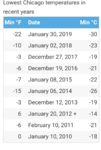JonW
Shohin
I can't find a definitive answer regarding overwintering evergreen trees. It's about 50/50 whether sources say they need light over winter.
I have a nice size collection of tropicals, and ended up with a few cold-hardy deciduous plants that I overwinter under my storm doors. But I'm considering getting some evergreen and/or coniferous trees. I don't have a place to heel in, and the area under my storm doors barely gets any light. I have a disconnected garage, but not much space and not sure I want to commit to water plants in my garage for years to come (even though its like monthly watering).
I am interested in a boxwood (I posted a thread about this, sorry for the redundancy), azalea and I have a juniper (precumbens nana) that I put back into the ground (it was a regifted big-box store bonsai). Alternatively, I could expand my tropical or deciduous collection. I'm air-layering a maple and one of my crepe myrtle, and might buy another maple, a larch or redwood/cypress.
Has anyone here had success, year after year, overwintering evergreens (broadleaf and conifer) in a cold space WITHOUT light? If not, anything that would survive outdoors without heeling in?
I have a nice size collection of tropicals, and ended up with a few cold-hardy deciduous plants that I overwinter under my storm doors. But I'm considering getting some evergreen and/or coniferous trees. I don't have a place to heel in, and the area under my storm doors barely gets any light. I have a disconnected garage, but not much space and not sure I want to commit to water plants in my garage for years to come (even though its like monthly watering).
I am interested in a boxwood (I posted a thread about this, sorry for the redundancy), azalea and I have a juniper (precumbens nana) that I put back into the ground (it was a regifted big-box store bonsai). Alternatively, I could expand my tropical or deciduous collection. I'm air-layering a maple and one of my crepe myrtle, and might buy another maple, a larch or redwood/cypress.
Has anyone here had success, year after year, overwintering evergreens (broadleaf and conifer) in a cold space WITHOUT light? If not, anything that would survive outdoors without heeling in?

